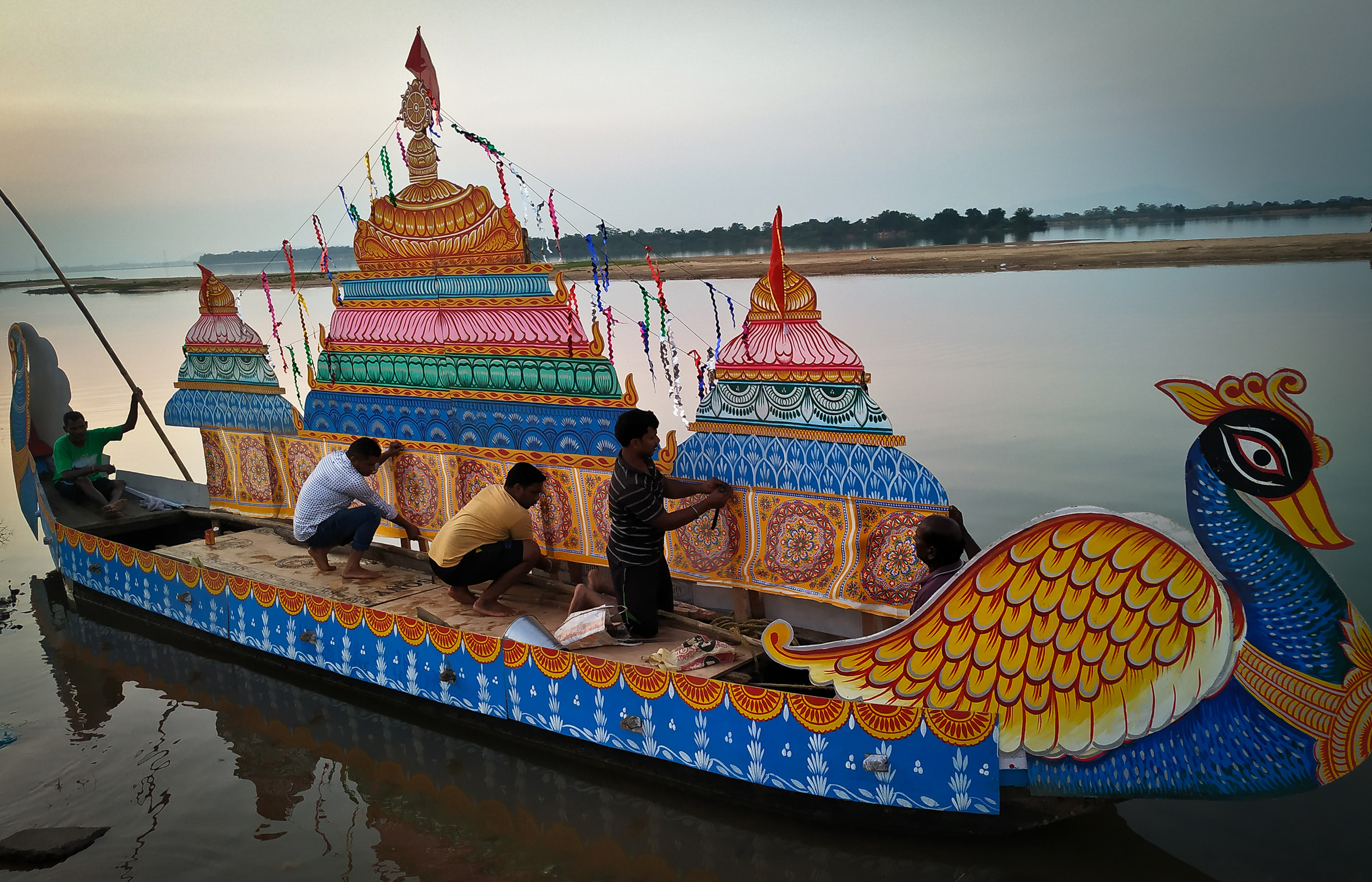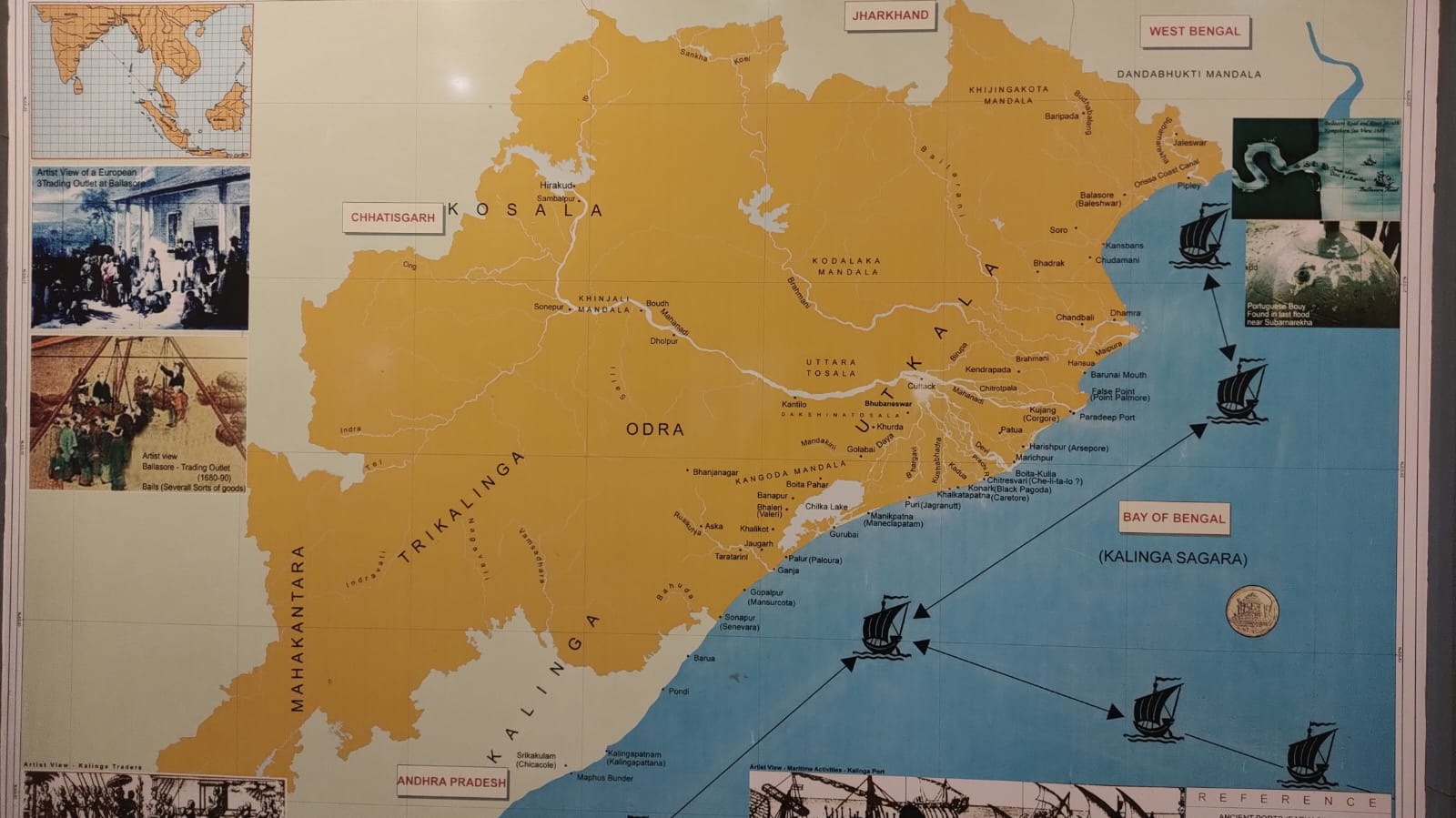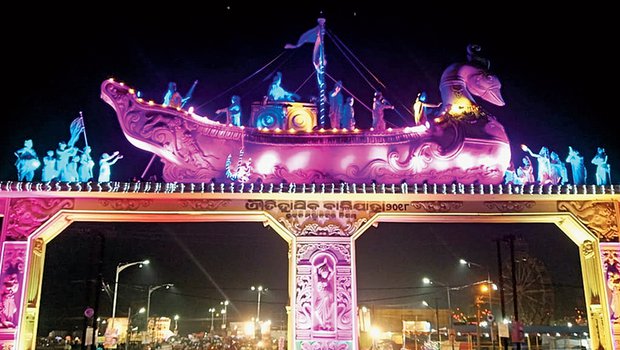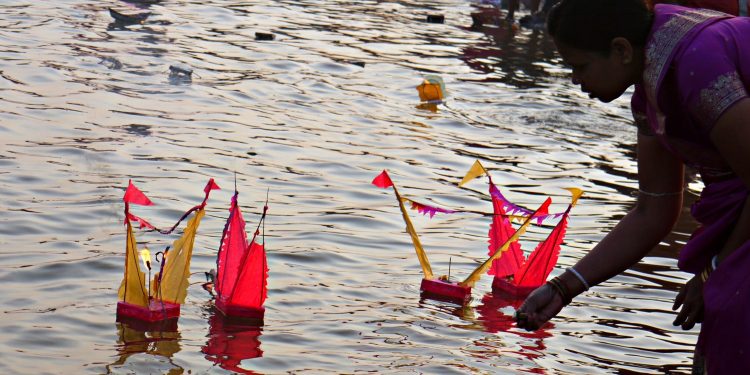In the heart of eastern India lies the coastal state of Odisha, where every year on the full moon day in the holy month of Kartika, the air is filled with the spirit of ‘Boita Bandana’. This age-old maritime tradition, deeply rooted in the state’s history, is a unique celebration that pays homage to the seafaring heritage of Odisha.
Setting sail with tradition
Boita Bandana, also celebrated as Kartika Purnima marks the day when ancient Odia mariners, known as Sadhabas, set sail on their wooden boats or ‘Boitas’ to trade with distant lands. This historical event is commemorated by locals who engage in a symbolic act of floating miniature boats made of banana stems, paper, and coloured cloth in water bodies like rivers, ponds, and the sea.
The ritual and its symbolism
The ritual holds significant cultural importance. On the auspicious day of Kartika Purnima, the decorated miniature boats are set afloat with offerings of lamps, flowers, and prasad (sacred food) as a gesture of remembrance and gratitude to the sea god Varuna. The act is not just a ritual but a reflection of the resilience and adventurous spirit of Odisha’s ancestors who ventured into the unknown waters for commerce and cultural exchange.

Trade of goods during ancient times
The Boita Bandana ritual is not just a symbolic gesture but a nod to the vibrant trade and cultural exchange that once defined Odisha’s coastal regions. In ancient times, the Sadhabas would embark on daring sea voyages, carrying goods such as spices, textiles, and artefacts, establishing Odisha as a crucial trade hub in the Indian subcontinent. The miniature boats launched during Boita Bandana serve as a poignant reminder of the bygone era when the waters connecting Odisha to distant lands were navigated with skill and determination.
Ancient ‘Kalinga’ ports
Odisha’s ancient maritime trade was intricately tied to the presence of ancient Kalinga ports along the coastline. Ports such as Manikapatna and Palur were bustling centres of commerce, welcoming ships laden with treasures from distant lands. These ports not only facilitated trade but also served as cultural melting pots, where ideas, art, and beliefs flowed freely, contributing to the rich tapestry of Kalinga’s heritage.

Significance of ‘Baliyatra’ in Cuttack and Paradip
While Boita Bandana is celebrated across Odisha, the festivals of Baliyatra in Cuttack and Paradip hold special significance.
Baliyatra, translating to ‘a voyage to Bali,’ is a grand carnival in Cuttack that commemorates the ancient trade links between Odisha and Indonesian island of Bali. It is a vibrant showcase of Odisha’s cultural diversity, featuring traditional crafts, folk performances, and a bustling fair.
In Paradip, a major port city, Boita Bandana takes on a modern and commercial aspect. The port, playing a pivotal role in contemporary maritime trade, celebrates the ritual with enthusiasm. The juxtaposition of ancient traditions and modern commerce highlights the evolving significance of Boita Bandana, emphasizing Odisha’s enduring connection to the sea.

Modern revival and tourism
In recent years, efforts to revive and promote Boita Bandana have gained momentum. Local authorities and cultural organisations organise events that showcase the tradition, attracting not only the locals but also tourists eager to witness and participate in this unique celebration.
The picturesque scenes of rivers and beaches adorned with floating boats create a mesmerizing spectacle, drawing attention to Odisha’s rich cultural tapestry. The state’s tourism sector has embraced Boita Bandana as a cultural attraction, emphasising the significance of preserving and celebrating such traditions.
Boita Bandana is more than a ritual; it is a living testament to Odisha’s seafaring legacy. As miniature boats gently float on the water, carrying with them the hopes and traditions of a bygone era, the people of Odisha continue to embrace and celebrate their rich maritime heritage, inviting the world to join in the festivities of Boita Bandana.
PNN






































